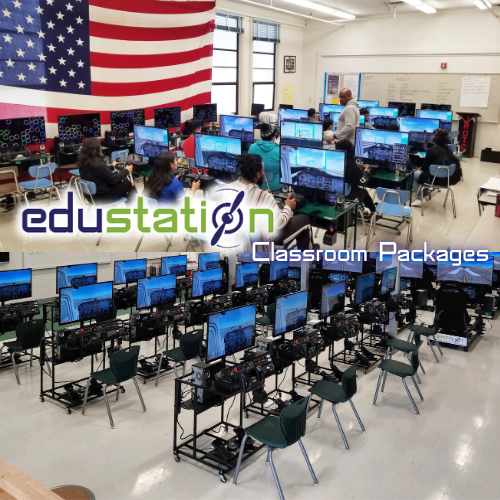
28 Aug Press Release: STEMPilot Launches After School Aviation Lab
FOR IMMEDIATE RELEASE
STEMPilot Launches New After-School Aviation Lab to Teach Students Principles of Flight
STEMPilot is proud to announce the launch of its new STEMPilot Afterschool Aviation Lab, a program designed to get classes of 20 students excited about science, technology, engineering, and math (STEM) by teaching them to fly. The program uses hands-on flight simulator training to reinforce classroom lessons on science, engineering, and math. The objective is to improve critical thinking and problem solving skills to improve standardized test results and attendance.
The curriculum is structured into 15 two-hour sessions, with the first hour dedicated to academic content and the second hour flying the simulators. Easy to follow lessons each begin with a video on the subject, what we call Visual Learning First Educationtm, supported with the use of Phonics to help learning terms, No Memorizing here. Classroom handouts you print are included for each lesson.
Students form into Flight Crews of 2 or 3 for all activities to promote collaborative learning. The program’s avatar, Skyler, guides the students through the lessons.
Lesson plans cover a wide range of topics, including:
- The Four Forces of Flight: Students learn about the forces of flight—lift, thrust, gravity /weight, and drag. The program explains that lift, generated by the wings, overcomes the weight and gravity holding the plane on the ground. Thrust, created by the propeller, overcomes the resistance of air, known as drag.
- Flight Instruments: Students are introduced to the six primary flight instruments, also known as the “6 pack”. These include the Air Speed Indicator, Artificial Horizon, Altimeter, Turn Coordinator, Directional Gyro, and Vertical Speed Indicator.
- Takeoffs and Landings: The curriculum provides detailed procedures for safe takeoffs and landings. Students learn to use the rudder pedals to steer the plane on the ground and achieve a rotation speed (Vr) of 60 knots for takeoff. For landing, they learn about using flaps to fly at lower speeds and the importance of monitoring air speed and glide slope with PAPI lights.
- Navigation and Flight Planning: Students learn to use instruments like the Directional Gyro and a stopwatch to follow a flight plan. They also learn how to calculate flight time, fuel consumption, and weight for each leg of a trip using classroom math.
The STEMPilot Afterschool Aviation Lab is designed for up to 20 students, working and flying together in Flight Crews, emphasizing a collaborative learning environment to help each other succeed.
Upon completion of the program, students earn a Certificate of Achievement.
For more information, please contact sales@stempilot.com or call 203-527-5747
Contact: Sales
sales@stempilot.com
203-527-5747 (EST)

